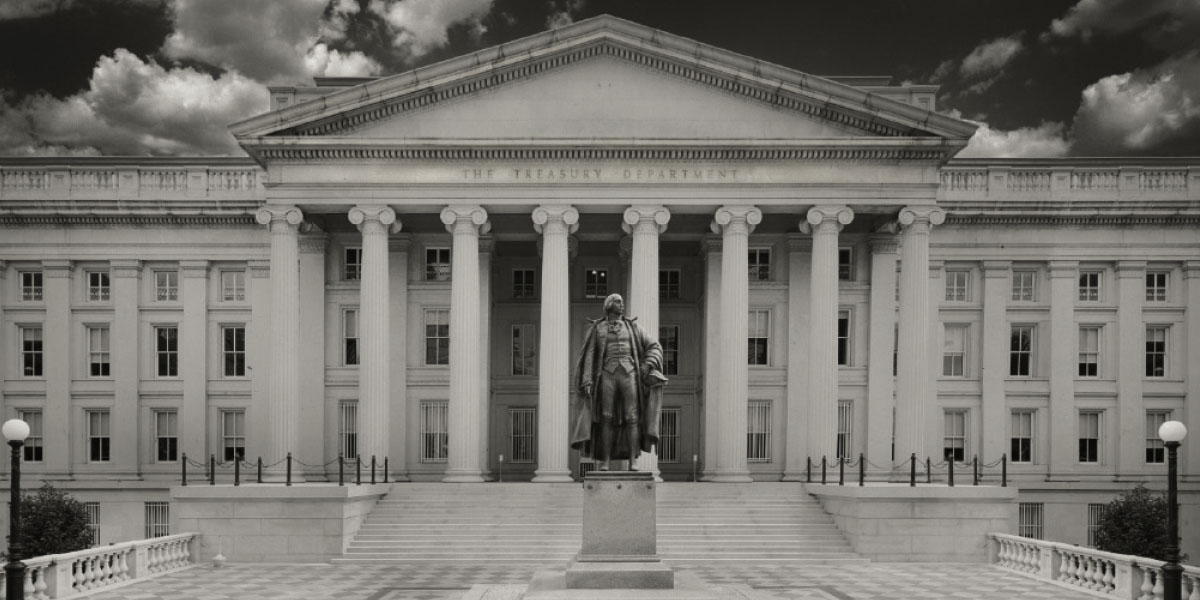As lawmakers return to Washington after the annual August congressional recess, so too does talk about the deficit, sequestration, a government shutdown, and a potential debt-ceiling crisis. Congress and the White House must find agreement on how to keep the federal government running past September 30—or face a shutdown.
The U.S. Department of Treasury is honoring its debt commitments and currently estimates it can do so through October, and possibly into November. However, without congressional action sometime this fall to extend the statutory debt limit, the threat of default—and catastrophic economic consequences—remains imminent.
A September Stopgap Measure
The 2013 federal fiscal year ends on September 30, with FY14 set to begin October 1. It is not unusual for Congress to need to pass stopgap funding measures to keep the government running because it has not finished its work on annual appropriations legislation. In fact, the last time Congress passed all the appropriations bills on time was in 1994.
However, bitter partisan divides and the complexities of sequestration have made it difficult not only to find compromise, but even to muster one-house votes for passage of each of the 12 separate spending bills that encompass the federal budget. Before the August break, the House had passed only 4 of the 12; the Senate, none.
Even if the Republican-led House and the Democratic-led Senate were to pass their full slate of appropriations measures, compromise through the regular conference process would be nearly impossible. The House has been marking up spending bills based on an overall budget of $967 billion for discretionary spending, while the Senate has targeted $1.058 trillion in spending, a $91 billion difference.
However, neither party has been drafting FY14 budgets that reflect current law. The 2011 Budget Control Act requires cuts in federal spending of approximately $1.2 trillion over 10 years. Under the BCA sequestration rules, now in force, automatic spending cuts are in order for both defense and nondefense spending.
The Senate budget ignores the BCA sequester altogether. The House budget, while aligned overall with the level of spending set forth in the BCA, disproportionately allocates the cuts to nondefense spending and restores some defense spending—against the BCA law. Neither the Republican nor the Democratic FY14 budget outline could be enacted into law without altering or repealing the sequestration provisions of the BCA.
Sequestration Austerity
During the August recess, congressional Democrats made a point to discuss with constituents in their home states and districts the consequences of sequestration. Advocacy groups such as the Committee for Education Funding and the Coalition for Health Funding have been rallying against the sequester cuts. In the meantime, 800,000 federal workers have been furloughed, and colleges and universities have faced reductions in funding in the Supplemental Educational Opportunity Grant and Federal Work-Study programs as well as in federal research budgets.
However, with small improvements in the economy, and very few splashy national headlines about pain from the budget cuts, it is unlikely Congress will be compelled to completely halt the sequester.
Some type of continuing resolution, short-term or long-term, will be necessary by September 30 and, in all likelihood, it will need to reflect sequestration, adding additional FY14 cuts on top of the FY13 cuts already in place. It is difficult to read the tea leaves as to where Congress and the administration might find some compromise specific to higher education programs.
The House Committee on Appropriations called for an 18.6 percent cut from FY13 to FY14 in the spending bill that includes the National Institutes of Health, federal student aid, and other health and education programs. While the Pell Grant program is on solid ground for FY13 and no shortfall is anticipated for FY14, it will no longer be protected from sequester cuts, as it was in FY13 based on a BCA provision. If the program is left whole, the FY14 maximum Pell Grant award is set to rise to $5,785.
Still Seeking a Grand Bargain Agreement
In July, news broke that President Obama’s top aides have been meeting with Republican senators since March to plot a way out of the fiscal mess expected this fall. Also in July, Obama offered a corporate tax reform proposal, one that could possibly be a part of a so-called “grand bargain” agreement over debt and spending that incorporates entitlement reform and both individual and corporate tax reform. The Obama plan, among other reforms, would lower the top corporate rate to no higher than 28 percent while eliminating loopholes and incentives for companies to locate overseas.
President Obama has publicly called for a clean debt-limit increase measure; that is, a vote to lift the debt ceiling that would not be loaded with other legislation. However, should there be a standoff over a government shutdown, House Republicans believe there is a possibility to gain traction on some of their priorities—including further spending reductions. This fall, Washington lawmakers have an opportunity before them to work in a bipartisan fashion to boost the economy and instill market confidence. However, if the past is prologue, look for short-term solutions that put temporary patches on our still fragile economy and leave little room for new investments in infrastructure, education, and innovation.
NACUBO CONTACT Liz Clark, director, congressional relations, 202.861.2553, @lizclarknacubo



